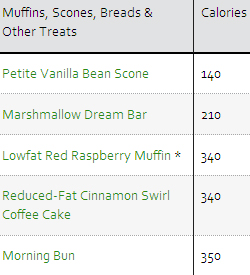Menu Labeling: Good or Bad?
 Do you ever feel like it’s hard to choose what to order off the menu? Well, it might start to get a little more complicated. More and more states in the US are passing laws that require restaurant chains to post the number of calories in each item on their menus, with the hope of reducing America’s obesity problem.
Do you ever feel like it’s hard to choose what to order off the menu? Well, it might start to get a little more complicated. More and more states in the US are passing laws that require restaurant chains to post the number of calories in each item on their menus, with the hope of reducing America’s obesity problem.
By giving people calorie information, the government hopes that people will make smarter choices about what they order. One study found that when calorie information was posted on the menu, people ordered 14% less calories than before.
While it’s good that someone struggling with obesity may not order a large milkshake at McDonalds because they see it contains about 1,000 calories, what effect do you think this could potentially have on someone who doesn’t have a weight problem (or on someone with an eating disorder)? What if a person with an eating disorder ordered the lowest calorie option only to help them restrict calories even more?
There definitely are some issues regarding menu labeling. Many people don’t know how many calories they need to eat in a meal (or even per day), and may not know if they’re eating too few or too many calories at any particular meal. Calories also don’t give you all the nutrition information you need to make smart choices. There’s a lot more to a food that can make it a healthy or an unhealthy choice, such as whether it contains nutrients including dietary fat, protein, fiber, vitamins, and minerals.
So, I think that there are going to be both positive and negative effects of posting calorie information on menus. This information can be useful, but it isn’t something you should obsess about. The point is to be aware of how many calories are in the foods you order, not to order the lowest calorie item because of a number. Keep in mind that calories are fuel, and food is never something that you should make yourself feel guilty about.
Brooke, CYWH Summer Volunteer

